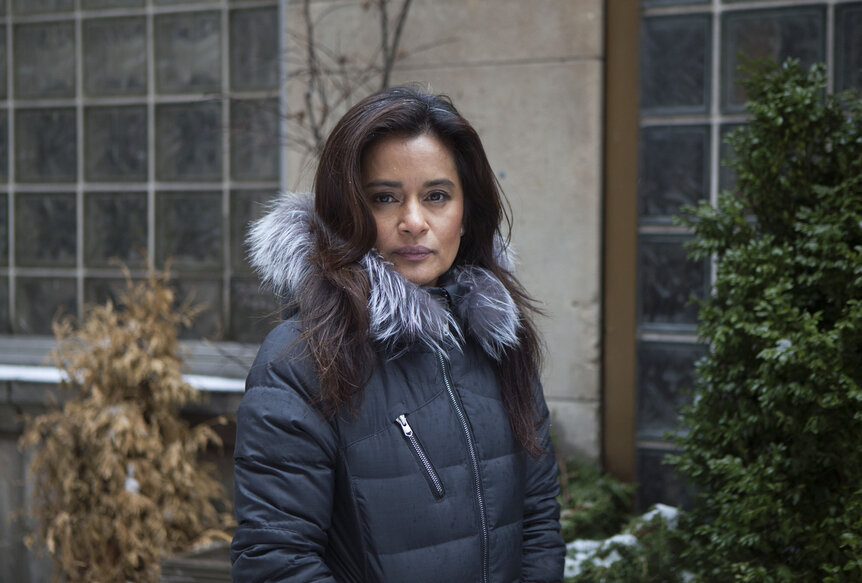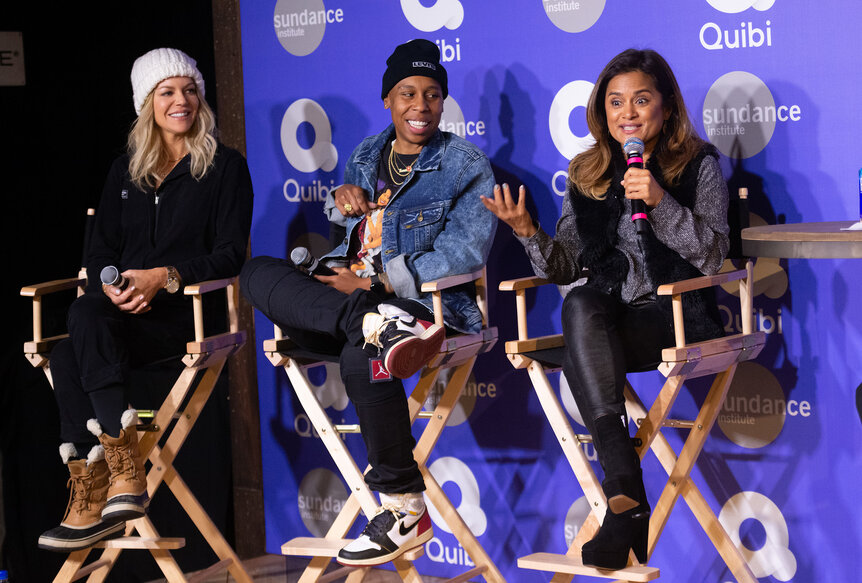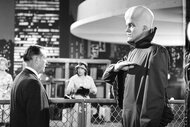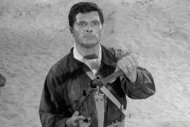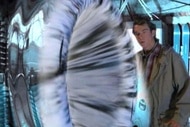Create a free profile to get unlimited access to exclusive videos, sweepstakes, and more!
Quibi's The Stranger: How creator Veena Sud made a tech horror series for your phone
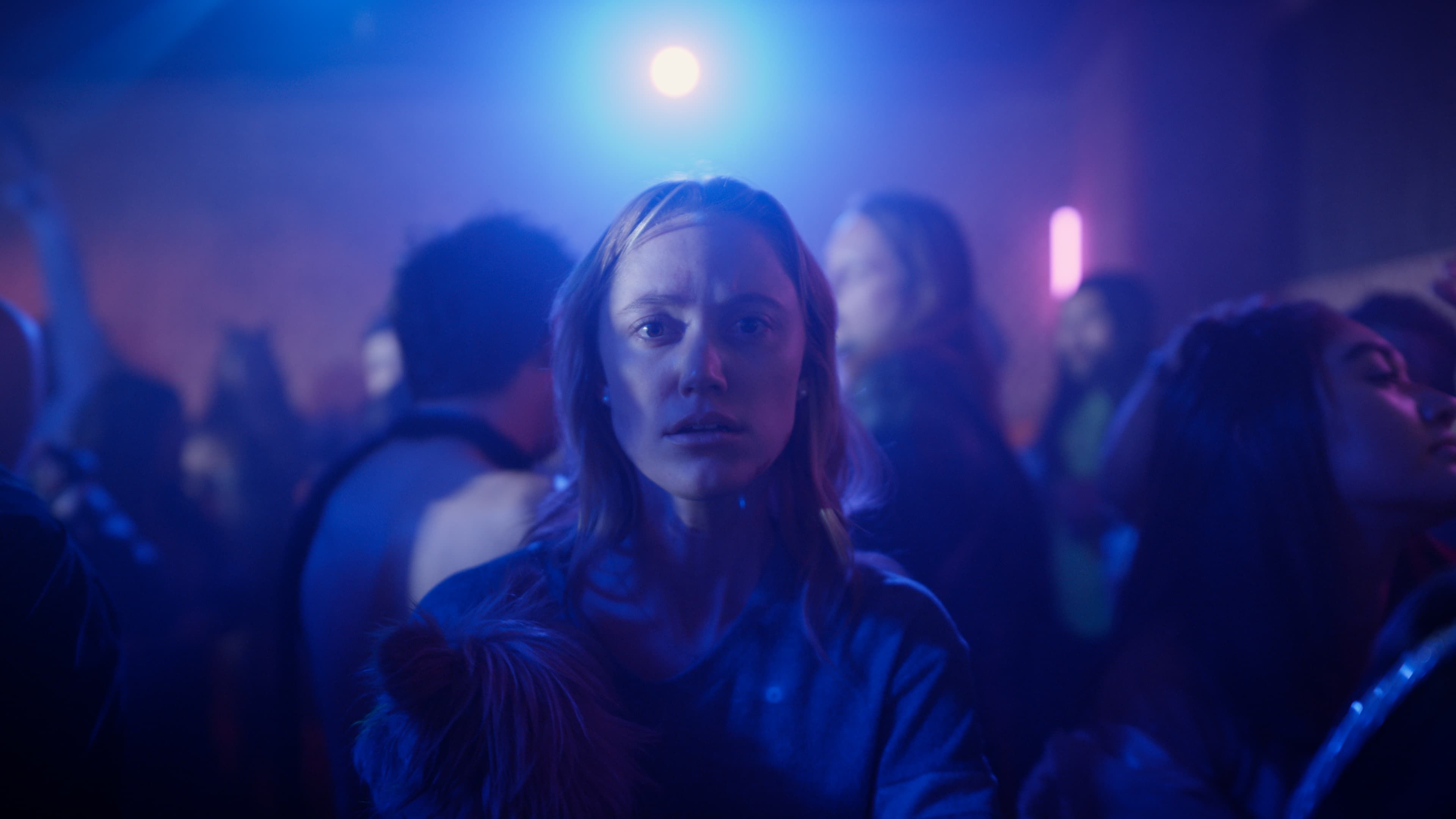
The Stranger, one of short-form streaming service Quibi’s first genre offerings since its April 6 launch, is a product of its platform. The series is comparable to other horror fares such as The Hitcher, with a high-tech rideshare twist. Dane DeHaan (A Cure for Wellness, Valerian and the City of a Thousand Planets) is a murderous, unstoppable psychopath on the hunt and the always-great final girl extraordinaire Maika Monroe (It Follows, The Guest) is his quarry.
Written and directed by the Emmy-nominated Veena Sud (Seven Seconds, The Killing), The Stranger is a social media slasher specifically crafted for mobile viewing as Monroe’s rideshare driver attempts to escape DeHaan’s murderous machinations. The intense thriller is out now on the app, which offers fans a 90-day free trial to get started ingesting its quick content bites.
Sud sat down with SYFY WIRE to talk about what it’s like making a show for Quibi, writing a technological dystopia, and casting her favorite scream queen.
How did you come to this project?
I was actually not planning to do television for a year, to take a break. I’d just done a film. I went in to meet with [Quibi founder Jeffrey Katzenberg], not knowing 100 percent, not grasping 100 percent, the Quibi concept. Within minutes — there’s a reason Jeffery Katzenberg is a visionary in our industry because the way he told me about Quibi and the opportunity felt like a completely different sandbox than I’d ever played in. I think that’s been the appeal for so many artists, is that it’s a hybrid but it’s a totally new thing.
The more that I thought about the platform itself — it’s an interactive platform, the phone — it’s something that is 100 percent universal. From L.A. to New York to the small town my mother grew up in in the Philippines, we all have the same exact feeling when we hear a text tone. It’s pretty remarkable, this device. And then, to create quality scripted programming for it introduces a whole other set of crayons in the crayon box, which are interactivity in a very real way (and not an artificial way) and visuals. Seeing visuals different than we’re used to on a widescreen.
Part of what Jeffery’s intent with Quibi is that you can hold the phone obviously as it’s designed to be held: vertically or horizontally. And were you to hold it vertically, how that visual experience matches this highly elevated cinematic mindset we all have because we’re watching widescreen stuff in our homes. How is an artist able to bring that experience to the small screen?
So all of those challenges resulted in me coming up with the idea for The Stranger and a story that lent itself naturally to Quibi.
So you developed the script after being approached and it wasn’t a feature script you’d had knocking around?
My usual storytelling is cinematic, it’s slow burn, it’s contemplative. The Stranger is anything but that. It’s high-octane and propulsive and it’s always moving the characters through physical spaces. It’s allowed me to do something 100 percent different that I’d never done before.
The shooting style is really different from anything you’ve done, too.
The story lent itself to that, but I also worked with a new [director of photography] Paul Yee, who did this Sundance film called The Fits where the camera danced with the actors, who are cheerleaders in high school. I knew I’d need the camera to dance, to physically move a lot.
Again, for a filmmaker, the new crayon I got to play with was instead of seeing horizontally exclusively on a widescreen, the challenge became, "What if an audience member holds their phone vertically the entire time? How can I make sure they don’t feel cheated and bored, visually?" That’s one of the reasons this is a show about a woman who’s on the run because she’s always moving through new spaces. We had to think in terms of lines that go into infinity. Because you don’t have the left and the right of a widescreen at all in a vertical screen, we thought of terms of depth.
So going super deep inside the screen, that’s the design of all the locations. There are trains with seats that go to infinity; there’s Chinatown, with lanterns that go on to infinity; there’s always something to keep watching, deep in the screen that keeps the feeling of fullness in the image.
You really see that at the end of the third episode with the long apartment hallway, which feels extremely slasher-y. What horror influences were you taking from for the show?
I’ve long been a horror film fanatic. I’m sure many of the films that imprinted themselves on my brain when I was a child — and probably shouldn’t have been watching Hitchcock — many of those images have found a new home.
And definitely that hallway was one. It’s a hallway that’s oddly too long in real life. If you look at it, you’d say, "I’m never gonna use this as a location because it’s so surreal and ridiculous looking." It’s actually in our production offices. We went back there and Paul and I were taking pictures and he said, "This is like a Korean horror film. It’s great." Our production designer repainted it and made it into an apartment hallway. There was a lot of running, for days, down that long, long, long, endless hallway.
Aside from location and set design, were there any narrative elements influenced by the format?
I actually know very little about technology. I had a flip phone for an embarrassingly long, long time. Having the phone itself be the platform and knowing people would be watching it that way allowed me to think and be excited about dystopic visions of technology and dystopic visions of what someone’s phone could do to them.
I heard this really interesting talk from Jen Golbeck, who’s an A.I. developer. It was a pro and con conversation between her and another developer, and Golbeck said that everything is developing so quickly that she feels like Oppenheimer. We don’t have an ethics framework around the technology, so things are happening that none of us expected to happen, that are threats to our human rights and democracy. She was an advisor on the show. That idea of technology run amok I thought could be a cool meta on a television show on a phone.
It definitely has shades of people giving Google all their data to help personalize their search terms.
We know this now, thanks to [the Facebook/Cambridge Analytica data scandal], and this is the dystopia of all those elements that we know exist coming together in the hands of one guy who’s determined to stalk and kill you.
At the same time, you have very classic storytelling references like One Thousand and One Nights’ Scheherazade and Wizard of Oz.
I’m so glad you noticed that! It’s definitely old school and new. I just love the idea of Dorothy and her dog... the idea of a young woman coming to L.A. to become a writer and running into a monster is all, to some degree, a metaphor, and also a fun place to break into a new tech platform. And to see if anyone actually knows what the hell I’m talking about.
How did you decide on your leads?
It Follows was just mind-blowing to me and [Monroe’s] performance just — she’s such a remarkable young actress. I really wanted my heroine in my horror film to be a different kind of heroine. I tried to take a genre, like I did with The Killing, and infuse it with emotionality and with other things that we don’t maybe associate with the genre. One thing as a horror fan, and thankfully this has been changing in newer horrors, is that I never felt female empowerment. You feel female victimization and/or sexualization and it was always disturbing as a young woman for me to see that, so this is my opportunity to flip it on its head.
Maika is for real. Every emotion that she feels is so grounded in truth that the terror and the fear and the sadness and the despair brings you on that journey with her. It’s not sexy, it’s not cute. It’s not superficial or light. I knew after seeing her in It Follows that she could embody something in a very real way and in a very elevated way. As the story progresses, she gets to take back her own power and the way Maika stepped into that was a thing of beauty.
Dane DeHaan I’ve wanted to work with for many years. I saw him first in The Place Beyond the Pines and Dane is the most layered young actor I’ve seen in years. He goes from The Place Beyond the Pines, where he’s such a tender, vulnerable young man, to these really dark places that feel genuine and scary. His range is phenomenal. When I first wrote the role, I was thinking about Dane. So we went out to him right away and he said yes. And Avan Jogia! He’s funny and charismatic and everything I wanted him to be as a companion and friend to Clare.
How did you make the decisions of where you were going to cut them into the episodes? Each runtime for the episode I’ve seen has been different.
The initial concept is 10 minutes or less and Jeffery was very clear it absolutely could not go over 10 minutes. That was the rule. For the most part I’d planned for each episode to run approximately 10 minutes, but what happened was that when I went to write it, I started to realize it was a general rule and it couldn’t land at the 10-minute mark every time or it would feel artificial.
So what I ended up doing is throwing out that playbook and saying, “Write a three-act movie.” OK, you’ve got that. You’re going to take that movie and cut it up into 10-minute blocks. So I did that. Then I realized that’s not 100 percent correct — it’s a hybrid between the three-act structure and episodic. So I had to go back in and say, “What is the new information at the end of this 10 minutes?”
Whether it was a wild cliffhanger (which most of them turned out to be), or completely new information that you were not expecting, or a complete reversal around a character, I had to keep that excitement going in whatever amount of time I’d naturally come to under ten minutes.
So you had to punch things up.
Yeah, that’s exactly what I had to do. The danger is that you have less real estate than you would on a 60-minute show. When you’re writing a sixty-minute show, when you’re going out you can say, “I planted something 10 minutes into the show. They’ve forgotten about it at this point, so I can reverse it or I can surprise them again with it.”
But when you’re talking about a six-to-10-minute increment, people don’t forget things. If I tried to do the same thing I do on 60-minute shows, you’d feel the repetition. That was a huge challenge: How do you do a cliffhanger every six to 10 minutes and not feel like you’re juking in a way that’s manipulative or false?
That was weirdly harder than writing an entire 13-hour series — thinking of how to get out of each episode in a way that was satisfying.
The Stranger is available on Quibi now.
